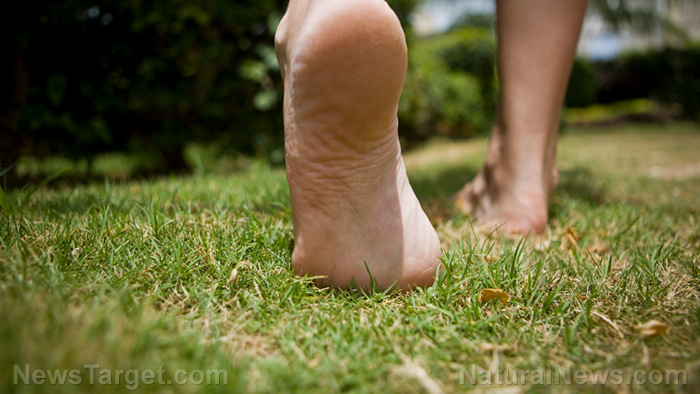Learn about brain health and nootropics to boost brain function
Are foot calluses BETTER than shoes at protecting your feet? Study explains

( Natural News ) There was a time when humans walked around barefoot. At that point, the soles of the feet were the only point of direct contact with the ground until the advent of footwear – beginning about 40,000 years ago. But wouldn’t it be wonderful to preserve the sensation of the ground touching your feet while also protecting them? New evidence suggests that foot calluses do exactly that .
A study published in the journal Nature found that foot calluses can not only offer increased protection, but can also preserve foot sensitivity . This is in contrast to shoes that are known to reduce foot sensitivity and change the way impact forces transfer from the foot to the joints higher up in the leg.
“It is fun to figure out how our bodies evolved to function,” said corresponding author Daniel Lieberman, professor of human evolutionary biology at Harvard University . “The sensory benefits of being barefoot might have health implications, but these need to be studied.” These feet are made for walking
Calluses are build-ups of hardened skin that are often found on the underside of the feet. These are usually caused by repeated pressure on certain parts of your skin. Although these calluses don’t indicate any medical health problems and aren’t a cause for alarm, health practitioners often suggest that these calluses should still be treated as soon as possible to prevent further discomfort. However, this study by Lieberman and his colleagues can potentially turn this idea on its head. (Related: Go barefoot more to make your feet stronger, avoid foot problems .)
To explore the reason behind the protective effects of foot calluses, the research team – consisting of individuals from institutions in the US, Germany and Africa – examined the feet of more than 100 adults, the majority of which hailed from Kenya. About half of the participants walked barefoot most of the time while the other half were mostly full-time shoe wearers.
After measuring callus thickness through the use of ultrasound, the researchers found that people who normally walked barefoot had calluses 30 percent thicker than those who only wore shoes. The researchers also used a device called a Shore durometer to quantify the mechanical properties of the foot soles and found that the skin of barefoot participants was 30 percent harder as well. While it is safe to assume that thickness and hardness can provide protection similar to a shoe’s sole, the researchers intended to find out if it also affects the sensitivity.
Further analysis showed that the thickness of calluses did not inhibit the foot’s tactile sensitivity or the ability to feel the sensation of the ground while walking. Unlike shoes, which clearly block this sensation, the sensory receptors in the foot still transmit signals to the brain despite the thickness and hardness of the feet. This uninhibited sensory signal can help barefoot walkers strengthen their muscles and create a stronger feet-brain neural connection.
“We suggest children to walk barefoot on humid grass with the purpose to stimulate the afferents [nerves traveling to the brain] for developmental reasons,” said co-author Thomas Milani, a professorship of human locomotion at the Technische Universität Chemnitz in Germany.
Finally, the researchers noted that walking in shoes, while it softens the initial impact of the footstep, can deliver much more force to the joints than those seen in thick-callused participants. This could lead to several health complications in the hips and knees – which is something future research on the subject should look into, according to the researchers.
All in all, walking barefoot can bring some surprising benefits one wouldn’t really expect. You can find similar stories at Health.news .
Sources include:
Nature.com 1
Nature.com 2
Read more at www.naturalnews.com